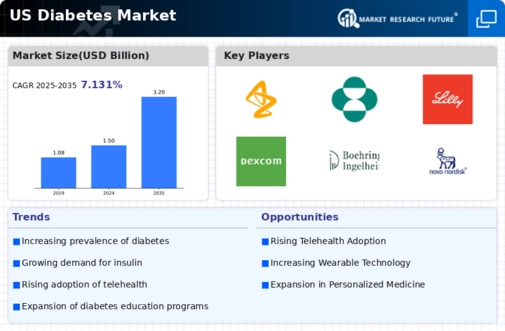The US Diabetes Market is characterized by a strong competitive landscape driven by a significant prevalence of diabetes and a growing emphasis on innovative treatment options. With millions of individuals affected by diabetes, the market has attracted numerous pharmaceutical companies, each striving to capture a share through differentiated products, effective marketing strategies, and strong distribution channels. Key players in this sector invest heavily in research and development to bring forth new therapies, ranging from insulin products to oral medications and combination therapies.
As the demand for diabetes management solutions rises, market participants are continuously adapting to shifting healthcare trends, regulatory challenges, and the evolving needs of patients and healthcare providers. AstraZeneca has established a formidable presence within the US Diabetes Market by offering a range of innovative medications that address the management of Type 2 diabetes. The company's strengths lie in its robust research and development pipeline, allowing it to consistently introduce new products that cater to diverse patient needs.
AstraZeneca's focus on patient-centric solutions, including medications that not only control blood sugar but also provide cardiovascular benefits, has enhanced its reputation in the market. The company also emphasizes collaborations with healthcare professionals and organizations to improve diabetes care, further solidifying its position. With a commitment to leveraging advances in technology for diabetes management, AstraZeneca remains a key player, dedicated to addressing the challenges faced by patients living with diabetes in the US. Merck brings a wealth of experience to the US Diabetes Market, with a portfolio that includes key products designed to enhance diabetes management.
The company's flagship diabetes medication has gained traction among healthcare providers and patients alike, owing to its efficacy and safety profile. Merck's strengths are underscored by its continual investment in clinical research, which supports the expanded use of its products and enhances its market presence. Additionally, Merck has executed strategic mergers and acquisitions to bolster its capabilities, allowing it to tap into new therapeutic areas and expand its product offerings.
In a landscape where customer loyalty and trust play significant roles, Merck's established brand and comprehensive support programs further enhance its competitive edge in the diabetes segment, ensuring it meets the diverse needs of patients across the US.













